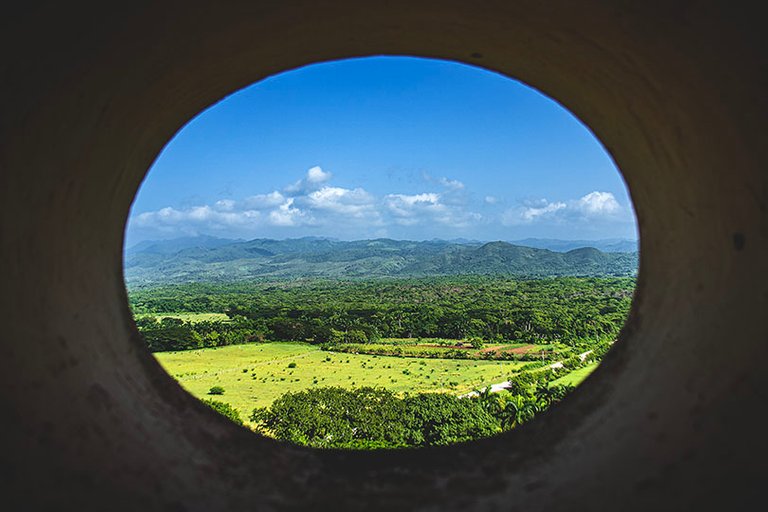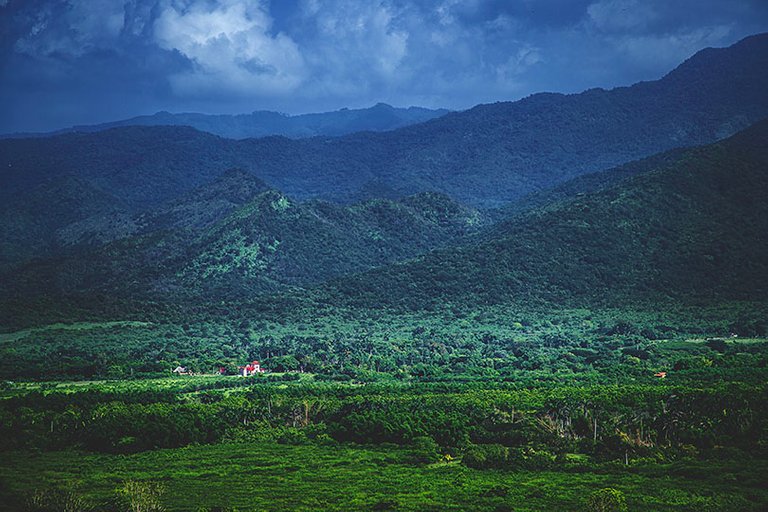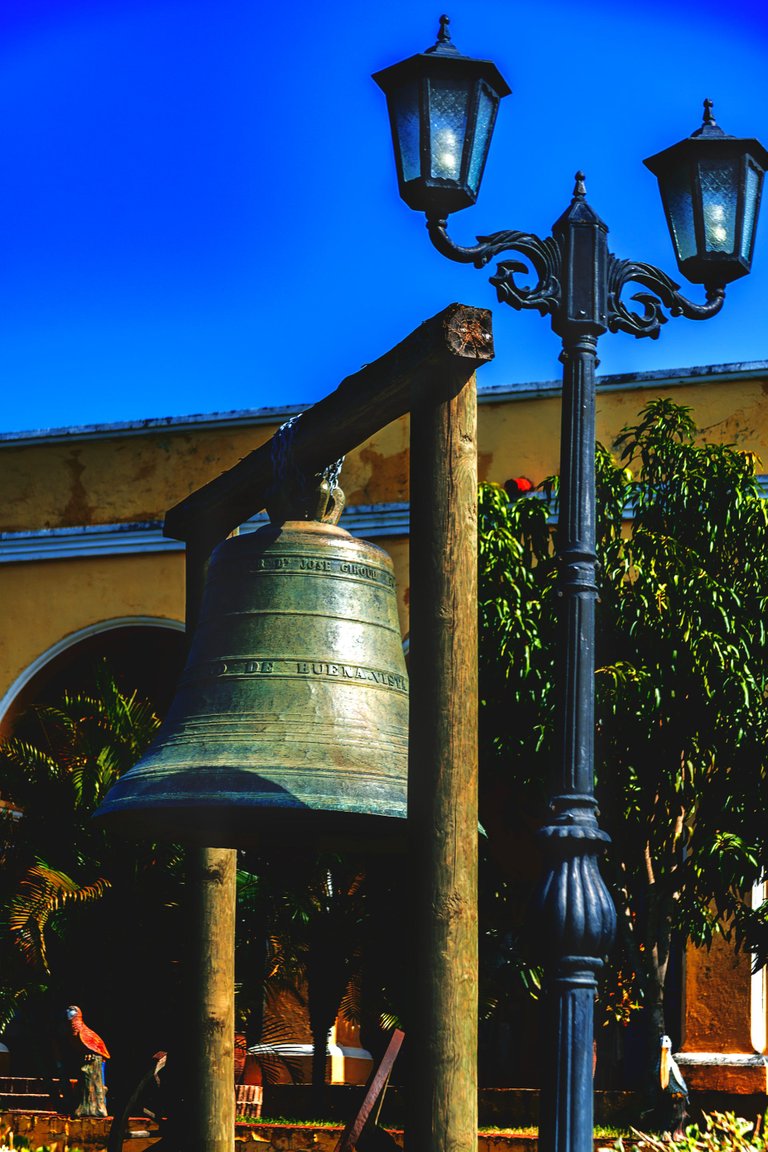Hola hivernautas y amantes de la fotografía. ¿A quién de niño no le gustaban los mitos y leyendas? En cuba hay muchas ciudades con historia interesantes, el imaginario popular es inmenso. Una de mis leyendas favoritas se relaciona con una torre y un amor imposible.
Hello hivernautas and photo lovers, who as a child didn´t like myths and legends?In Cuba there are many cities with interesting stories, the popular imagination is immense. But one of my favorite legends is related to a special tower and an impossible love.

A 15 kilómetros antes de entrar a la ciudad de Trinidad, se encuentra la hacienda Manaca-Iznaga y su imponente torre que parece salida de las Mil y Una Noches. La reina del "Valle de Ingenios", donde en el siglo XVIII vivían las familias más poderosas de Cuba. La casa hacienda es la mejor conservada de la zona. Era la vivienda de la familia más rica de la ciudad y que por supuesto, se dedicaban a la producción de mieles y azúcar explotando mano esclava. Pero con sus siete niveles, todos con estructura geométrica diferente y 184 escalones (de madera, debo decir) la torre justo al lado de la casa, es la protagonista de la historia.
Fifteen kilometers before entering the city of Trinidad is the Manaca-Iznaga property and its imposing tower that looks like out of the Thousand and One Nights. The tower is the queen of the "Sugar Mills Valley", where the most powerful families of Cuba lived in the 18th century.The house is the best preserved in the area. It was the home of the richest family in the city and of course, they were dedicated to the production of sugar exploiting slave labor. But with its seven levels, all with different geometric structure and 184 steps (wooden made, I must say) the tower right next to the house, is the protagonist of this story.

Cuenta una de las leyendas que los hermanos Pedro y Alejo Iznaga se enamoraron de la misma muchacha. Hicieron una apuesta de construir algo monumental, tan grandioso, que pudieran ver el mar del otro lado de la Villa. El ganador se llevaba la mano en matrimonio. Los esclavos trabajaron día y noche y lograron elevar la torre de Alejo 45 metros, después de un año. Pedro construyó un pozo buscando el agua en dirección opuesta, que en la actualidad se encuentra activo. Y yo que lo he visto, a pesar de estar vedado al público, doy fe de que es terrorífico de enorme y profundo!
One of the legends tells that the brothers Pedro and Alejo Iznaga fell in love with the same girl. They made a bet to build something monumental, so grandiose, that they could see the sea on the other side of the Village. The winner would take the girl in marriage. The slaves worked day and night and managed to raise Alejo's tower 45 meters, after a year. Pedro built a well looking for water in the opposite direction, actually is still active today. And I have seen it, even though it is closed to the public, and I might say, is terrifyingly huge and deep!

Otra version dice que Alejo se casó con Juana sin tanto sacrificio. Pero que los celos lo llevaron a encerrarla en el último piso de la torre para evitar a los pretendientes de la criolla. Alejo, cegado de pasión, llegó a retar a duelo a uno de los enamorados de la muchacha y le quitó la vida. Juana murió de pena y su espíritu se enciende en las noches en la cúspide de la torre iluminando el Valle.
Another version says that Alejo married Juana without so much sacrifice. But jealousy led him to lock her in the top floor of the tower to avoid the suitors of the Creole girl. Alejo, blinded by passion, challenged one of the girl's lovers to a duel and took his life. Juana died of grief and her spirit lights up at night at the top of the tower illuminating the Valley.

En mi opinión esta última historia es más difícil de creer. El último piso es demasiado estrecho para siquiera considerarlo. Realmente la torre es un punto de vigilancia. Así prevenían las fugas de esclavos. También permitían dar aviso de posibles incendios en los sembrados de caña de la zona. Una campana que antiguamente colgaba del torreón, iniciaba y cerraba la jornada. Hoy se encuentra en tierra, ya que la torre se ha inclinado por el paso del tiempo y no soporta el peso. Esto no evita que para el cubano, la Torre Manaca-Iznaga es y será un símbolo del amor.
In my opinion the latter story is harder to believe. The top floor is too narrow to even consider. Actually the tower is a lookout point. This is how they prevented slaves from escaping. It was also used to warn of possible fires in the sugar cane fields in the area. A bell that formerly hung from the tower, initiated and closed the day. Today it is on the ground, since the tower has been inclined by the passage of time and does not support the weight. This does not prevent that for the Cuban, the Manaca-Iznaga Tower is and will be a symbol of love.

Muchas gracias como siempre por su tiempo.Espero que hayan disfrutado estas historias tanto como yo.
Thanks so much for your time as always. I hope you enjoy the tells like I do.